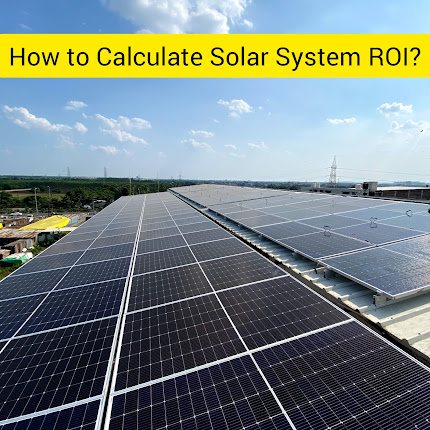To calculate the ROI (Return on Investment) of a solar power plant, you need to consider several factors, including the initial cost of the solar power plant, the cost of electricity generation, and the savings generated by the solar power plant over its lifetime.
Here is an example of how to calculate the ROI of a solar power plant in Indian rupees:
Assume that you are planning to install a 100 kW solar power plant on your property, and the total cost of the installation, including equipment and installation charges, is Rs. 60 lakhs.
The average cost of electricity from the grid in your area is Rs. 7 per kWh, and you estimate that the solar power plant will generate 150,000 kWh of electricity per year.
To calculate the annual savings from the solar power plant, you would multiply the total electricity generated by the solar power plant (150,000 kWh) by the cost of electricity from the grid (Rs. 7 per kWh), which gives you a total savings of Rs.10.5 lakhs per year.
To calculate the ROI of the solar power plant, you need to divide the total cost of the installation (Rs. 60 lakhs) by the annual savings generated by the solar power plant (Rs. 10.5 lakhs), which gives you an ROI of 5.7 years.
This means that it will take approximately 5.7 years for the solar power plant to generate enough savings to pay for the initial cost of the installation. After that, the solar power plant will continue to generate savings for the remainder of its lifespan.
It's important to note that this is a simplified example, and the actual ROI of a solar power plant can vary depending on many factors, including the cost of installation, the efficiency of the solar panels, the location and climate of the installation, and the cost of electricity from the grid. Therefore, it's recommended to consult with a solar expert or financial advisor to get a more accurate ROI estimate.









0 टिप्पणियाँ